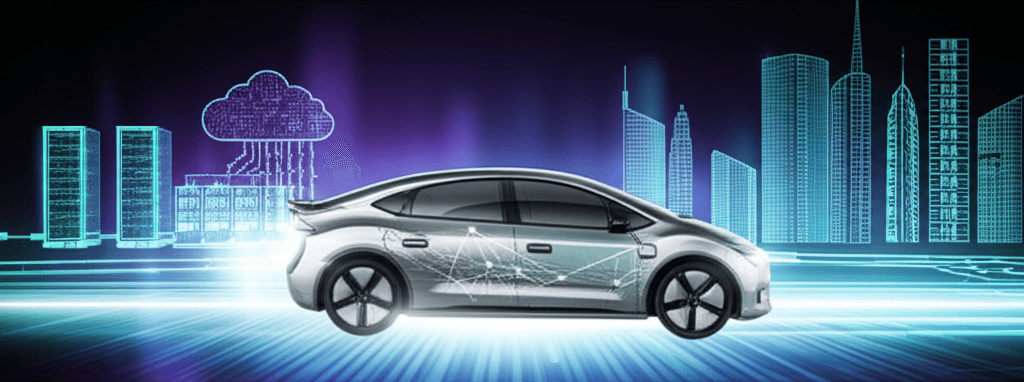Nvidia's Full-Stack DRIVE AV Software Enters Production, Accelerating AI-Powered Mobility
Pioneering end-to-end deep learning, Nvidia's platform delivers safe, scalable autonomous driving, from cloud training to vehicle control.
June 12, 2025

Nvidia has announced that its full-stack autonomous vehicle software platform, NVIDIA DRIVE AV, is now in full production, a significant development unveiled at the NVIDIA GTC Paris event held in conjunction with VivaTech.[1][2] This comprehensive platform is designed to accelerate the large-scale deployment of safe and intelligent transportation, catering to automakers, truck manufacturers, robotaxi companies, and startups.[1] The move signals a major step in providing the automotive industry with a robust foundation for AI-powered mobility, potentially unlocking a multi-trillion dollar global market in autonomous and highly automated vehicles.[1]
At the core of the NVIDIA DRIVE AV software is a shift away from traditional modular approaches in autonomous vehicle (AV) development, which typically involve separate components for perception, prediction, planning, and control.[1][2] Nvidia's platform unifies these functions using deep learning and foundation models.[1][2] These models are trained on extensive datasets derived from human driving behavior, enabling the software to process sensor data and directly control vehicle actions.[1][2] This end-to-end model approach aims to eliminate the need for predefined rules and complex traditional pipelines, allowing vehicles to learn from vast amounts of both real-world and synthetic driving data.[1][2][3] The goal is to achieve human-like decision-making capabilities, enabling vehicles to navigate complex environments and unexpected scenarios safely.[1][4] This learning-based methodology is a cornerstone of Nvidia's strategy to tackle the immense challenge of building autonomous systems that can reliably operate in the complexities of the physical world.[1]
The NVIDIA DRIVE platform is an interconnected system comprising several key components.[2] For the critical task of training AI models and developing AV software, NVIDIA DGX systems and GPUs provide the necessary computational power.[1][2][3] Simulation and the generation of synthetic data, crucial for testing and validating autonomous driving scenarios, are handled by the NVIDIA Omniverse and NVIDIA Cosmos platforms running on NVIDIA OVX systems.[1][2][3] To further enhance this development pipeline, the NVIDIA Omniverse Blueprint for AV simulation allows for physically accurate sensor simulation, enabling developers to convert thousands of human-driven miles into billions of virtually driven miles, thereby amplifying data quality and fostering efficient, scalable, and continuously improving AV systems.[1][3] Finally, for in-vehicle deployment, the automotive-grade NVIDIA DRIVE AGX computer processes real-time sensor data to enable safe, highly automated, and autonomous driving capabilities.[1][2][3] This comprehensive "three-computer solution" spans the entire AV development pipeline, from the cloud to the car.[1][5][6]
Safety is a paramount concern in autonomous driving, and Nvidia is addressing this through its NVIDIA Halos system.[2][5] Launched earlier this year, Halos is an end-to-end safety system that integrates hardware, software, AI models, and tools to ensure safe AV development and deployment.[2][3] It provides safety guardrails across simulation, training, and deployment and includes the NVIDIA DriveOS safety-certified ASIL B/D operating system, which offers a reliable foundation for safe vehicle operation and meets stringent automotive safety standards.[1][3] The NVIDIA AI Systems Inspection Lab, part of Halos, allows partners to validate that their software and systems meet rigorous industry requirements for functional safety, AI reliability, and cybersecurity.[7] This emphasis on a unified, full-stack, and safety-certified software architecture, which supports real-time sensor fusion and continuous improvement via over-the-air updates, is central to Nvidia's strategy.[1][3] The platform's modular and flexible nature allows customers to adopt the entire stack or a subset, catering to various levels of automation, from advanced driver-assistance features like surround perception and automated lane changes (Level 2++ and Level 3) to higher levels of autonomy as technology and regulations evolve.[1][3]
The implications of Nvidia's full-stack AV software platform entering production are significant for the AI industry. By providing a comprehensive, end-to-end solution, Nvidia is lowering the barrier to entry for some automotive players while simultaneously intensifying competition among existing AV technology providers.[4] The company's focus on deep learning, foundation models, and extensive data training (including the release of its physical AI dataset) aligns with broader trends in AI development, pushing the boundaries of what's possible in creating intelligent systems that can perceive, reason, and act in complex, dynamic environments.[2][5][8] The use of generative AI and world foundation models like Cosmos Predict-2, which can generate high-quality synthetic data and predict future world states, further accelerates development and improves model performance, especially in challenging conditions.[2] This capability to create rich, diverse training data, including edge cases, is critical for building robust and reliable AV systems.[9] Nvidia's success in the End-to-End Autonomous Driving Grand Challenge at the Computer Vision and Pattern Recognition conference for multiple years underscores its leadership in developing technologies for safer, smarter AVs using both real-world and synthetic data.[1] The automotive segment, while currently a smaller portion of Nvidia's overall business, has shown significant growth, and the company's evolving Drive platform, from Drive PX2 to the powerful Drive Thor, demonstrates a long-term commitment and substantial advancements in processing power and AI capabilities.[10]
In conclusion, Nvidia's announcement of its DRIVE AV software platform's full production status, highlighted at GTC Paris, marks a pivotal moment for the autonomous vehicle sector and the broader AI industry.[1] By championing an end-to-end approach built on deep learning, foundation models, and extensive data-driven training, Nvidia is offering a powerful toolkit for developing and deploying autonomous capabilities.[1][2] The integrated three-computer solution, encompassing AI training, simulation with synthetic data generation, and in-vehicle compute, coupled with a strong emphasis on safety through systems like NVIDIA Halos, positions the company as a key enabler in the race towards a future of safer, more intelligent, and increasingly autonomous transportation.[1][3][5] The platform's ability to learn from human driving behavior and adapt to a wide array of scenarios signifies a maturing of AI technology, with profound implications for how complex real-world tasks will be managed by intelligent systems.[1][11] As automakers and technology developers increasingly adopt such comprehensive AI-driven platforms, the development and deployment of autonomous vehicles are set to accelerate, potentially reshaping mobility and creating significant economic opportunities.[1][12]
Sources
[1]
[3]
[5]
[6]
[7]
[10]
[11]
[12]